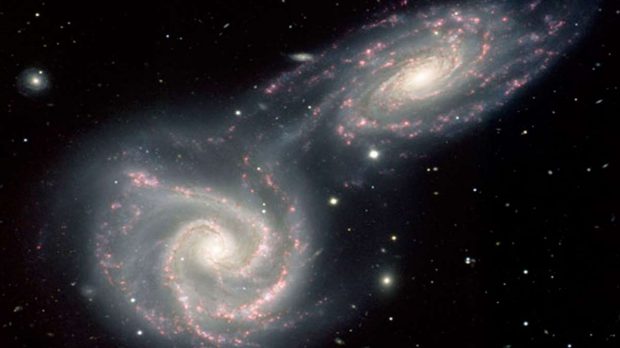Body
Particle astrophysics unravels the mysteries of the universe and helps us better understand the nature of the universe we live in.

Particle astrophysics is based on The intersection between particle physics, astronomy and cosmology. While traditional astronomy focuses on the study of the universe by observing light, particle astrophysics seeks to understand the universe through the analysis of other particles from space.
These particles come from cosmic events such as supernova explosions or the formation of black holes. They provide valuable information about the composition and evolution of the universe. Hence, the central goal of particle astrophysics is to unravel the mysteries of the universe.
A long story
From ancient Greece, The idea of atoms as the basic building blocks of matter has fascinated many thinkers. Democritus postulated divine, human, and common atoms as the basic units of everything around us.
Throughout the 19th and 20th centuries, major developments appeared. The discovery of the electron, proton and neutron changed the understanding of matter. Later, the discovery of quarks as the fundamental constituents of these particles opened up new frontiers in physics.
In 1900, Max Planck introduced the concept of energy “quanta”, which laid the foundation of quantum mechanics. This revolutionary field allowed us to theorize cosmic phenomena such as neutron stars and black holes. Challenging the existing view of the universe.
Origins of particle astrophysics
Particle Astrophysics Optics evolved from astronomy, in which telescopes were mainly used to observe the universe. With the advancement of detection technology, astrophysics emerged.
Department of Particle Astrophysics It has its roots in the pioneering work of scientists such as Theodor Wolff and Victor Francis Hess. At the beginning of the 20th century. In 1910, Wolff measured ionization at the base and top of the Eiffel Tower and found that there was more ionization at the top than expected.
For his part, Hess conducted balloon flights to measure ionization at high altitudes and found that ionization levels increased significantly with altitude. He concluded “Radiation of great penetrating power” entered our atmosphere from outer space.
These findings laid the foundation for understanding cosmic raysIt was coined by Robert Millikan in 1925 to describe this radiation from space.
Pioneering work by Hess and other scientists in detecting and understanding cosmic rays It paved the way for the development of particle astrophysics. Hess was awarded the Nobel Prize in Physics in 1936.
A fascinating piece
Particle astrophysics encompasses many different research areas Basic Astrophysical and Cosmological Phenomena. Among others, high-energy cosmic rays, particle cosmology, high-energy gamma rays, neutrino astronomy, active galactic nuclei, dark matter, etc.
It faces more variety Unresolved questions. For example:
- What is the universe made of at the level of elementary particles?
- What are the basic properties of neutrinos and how do they affect the evolution of the universe?
- What is the origin and nature of high energy cosmic rays?
- What characterizes the dark matter and dark energy that make up most of the observable universe?
- Why is there more matter than antimatter in the present universe and how did this asymmetry arise?
Through the study of subatomic particles, they seek to reveal the secrets of the universe. Taught particle physics There is no difference between the atoms that make us and the atoms that shine in the stars. Thanks to the study of the smallest, we can better understand the vastness of the universe and our relationship with it.
Advances in particle astrophysics
One of the greatest achievements of particle astrophysics Confirming the existence of dark matter, a form of invisible matter that represents approximately 27% of the universe. Through observations of the cosmic background radiation and the study of the distribution of galaxies in space, scientists were able to infer the presence of dark matter and its influence on the formation of large-scale structures in the universe.
There is another mystery that helped solve Dark energy is a mysterious force accelerating the expansion of the universe. Using data from supernovae, distant galaxies, and the cosmic microwave background, researchers were able to determine the nature and amount of dark energy in the universe, revealing an ever-expanding and accelerating universe.
Also, particle astrophysics has contributed to this Study of Cosmic Rays, high-energy particles that constantly bombard Earth from space. By detecting cosmic rays with instruments such as the Pierre Auger Observatory in Argentina, scientists can investigate the nature of these particles and their origin in the most energetic events in the universe.
Recommended Readings
Dark matter and dark energy in the universe

